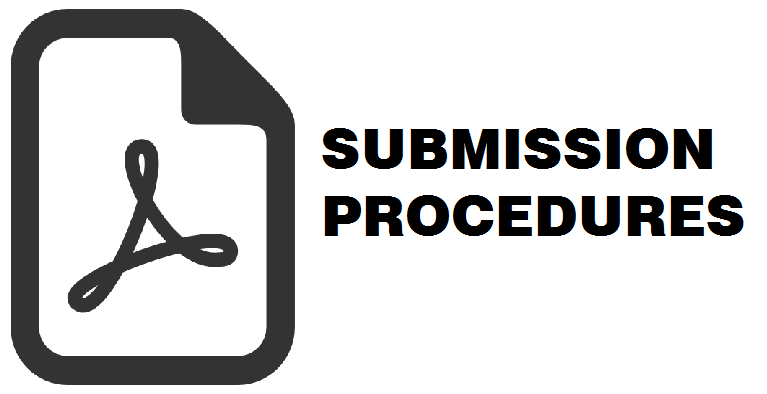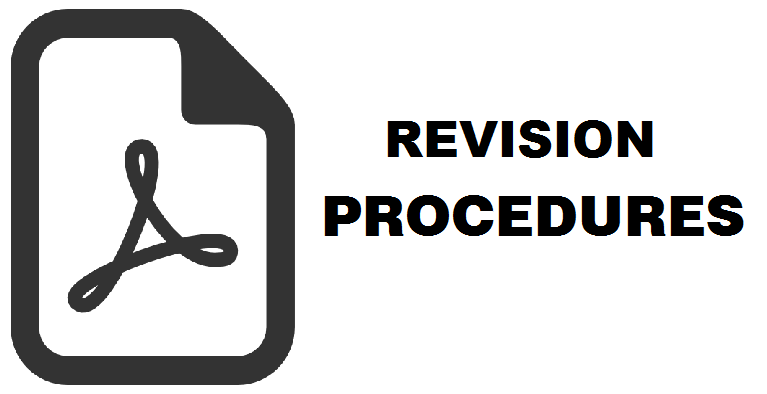Analysis of Population Growth Trends Based on Geographic Information Systems in East Jakarta
Prama Ardha Aryaguna(1*)
(1) Faculty of Engineering, Universitas Esa Unggul, Indonesia
(*) Corresponding Author
Abstract
The increase in population is accompanied by equal distribution. In this context, population density of Jakarta is partly due to urbanization and long-term settlement. Therefore, this research is carried out to identify sub-districts experiencing the fastest population growth and the accommodated capacity. Population issues must be a central point of sustainable development allowing every resident and future generations to live healthily, prosperously, productively, and harmoniously with the environment. The relationship between population growth rate (PGR) and spatial aspects such as healthcare facilities, trade facilities, transportation facilities, government offices, education facilities, industry, and the availability of residential buildings from 2017 to 2022 is determined through Geographic Information System (GIS)-based analysis using statistical methods. The trend of PGR in East Jakarta sub-districts is high in the northwest and north, bordering Central and North Jakarta. Meanwhile, spatial aspects influencing high population growth are the availability of residential buildings and schools. Increased residential buildings and public schools in a sub-district due to the zoning policy in student enrollment are directly proportional to population growth.
Keywords
References
Arsandi, A. S., Ismiyati, I., & Hermawan, F. (2017). Hubungan Pertumbuhan Penduduk dan Infrastruktur di Kota Semarang. Jurnal Karya Teknik Sipil, 6(4), 15–29. Retrieved from https://www.neliti.com/publications/188593/hubungan-pertumbuhan-penduduk-dan-infrastruktur-di-kota-semarang
Badan Pusat Statistik. (2021). Indeks Kebahagiaan 2021 (1st ed.; M. S. Tri Windiarto, S.Si, M. S. Awaludin Apriyanto, & M. E. Jamilah, S.Si, Eds.). Jakarta: Badan Pusat Statistik.
Badan Pusat Statistik. (2022). Penghitungan dan Analisis Kemiskinan Makro Indonesia Tahun 2022 (1st ed.; M. Nur Sahrizal, Nuri Taufiq, Ed.). Jakarta: Badan Pusat Statistik.
Badan Standarisasi Nasional. (2004). SNI Nomor 03 – 1733 – 2004 Tentang Tata Cara Perencanaan Lingkungan Perumahan di Perkotaan. 2004, 1–58. Retrieved from http://johannes.lecture.ub.ac.id/files/2012/10/Tata-Cara-Perencanaan-Lingkungan-Perumahan-di-Perkotaan-_-SNI-03-1733-2004.pdf
Beracha, E., Gilbert, B. T., Kjorstad, T., & Womack, K. (2018). On the Relation between Local Amenities and House Price Dynamics. REAL ESTATE ECONOMICS, 46, 612–654. https://doi.org/10.1111/1540-6229.12170
Dinas Kependudukan dan Pencatatan Sipil DKI Jakarta. (2018). Profil Perkembangan Kependudukan Provinsi DKI Jakarta Tahun 2017. Jakarta: Dinas Kependudukan dan Pencatatan Sipil DKI Jakarta.
Dinas Kependudukan dan Pencatatan Sipil DKI Jakarta. (2019). Profil Perkembangan Kependudukan Provinsi DKI Jakarta Tahun 2021. Jakarta: Dinas Kependudukan dan Pencatatan Sipil DKI Jakarta.
Dinas Kependudukan dan Pencatatan Sipil DKI Jakarta. (2020). Profil Perkembangan Kependudukan Provinsi DKI Jakarta Tahun 2019. Jakarta: Dinas Kependudukan dan Pencatatan Sipil DKI Jakarta.
Dinas Kependudukan dan Pencatatan Sipil DKI Jakarta. (2021). Profil Perkembangan Kependudukan Provinsi DKI Jakarta Tahun 2020. Jakarta: Dinas Kependudukan dan Pencatatan Sipil DKI Jakarta.
Dinas Kependudukan dan Pencatatan Sipil DKI Jakarta. (2022). Profil Perkembangan Kependudukan Provinsi DKI Jakarta Tahun 2018. Jakarta: Dinas Kependudukan dan Pencatatan Sipil DKI Jakarta.
Dinas Kependudukan dan Pencatatan Sipil DKI Jakarta. (2023). Profil Perkembangan Kependudukan Provinsi DKI Jakarta Tahun 2022 (Vol. 1). Jakarta: Dinas Kependudukan dan Pencatatan Sipil DKI Jakarta.
Faiz, N., Rahmawati, R., & Safitri, D. (2013). Analisis Spasial Penyebaran Penyakit Demam Berdarah Dengue Dengan Indeks Moran Dan Geary’s C (Studi Kasus Di Kota Semarang Tahun 2011). Jurnal Gaussian; Vol 2, No 1 (2013): Jurnal Gaussian. https://doi.org/10.14710/j.gauss.2.1.69-78
Fauzi, R. N., Febriani, R. K., & Desmawan, D. (2022). Pengaruh Laju Pertumbuhan Penduduk Terhadap Kemiskinan di Indonesia. Jurnal Ekonomi, Bisnis Dan Manajemen, 1(1), 118–122.
Hermanto, B. (2021). The Affect of Economic Growth toward Poverty in JABODETABEK. Journal of Economics, Finance And Management Studies, 04(11), 2168–2178. https://doi.org/10.47191/jefms/v4-i11-08
Indonesia. (2013). Undang-Undang Nomor 5 Tahun 2014 Tentang Administrasi Kependudukan. Kementerian Hukum Dan Hak Asasi Manusia, 1–104. Retrieved from sc.syekhnurjati.ac.id/esscamp/aturan/APARATUR_SIPIL_NEGARA_(ASN).pdf%5Cn
Krylov, P. (2020). Transport factor and types of settlement development in the suburban area of the Moscow capital region. E3S Web of Conferences, 210(Innovative Technologies in Science and Education (ITSE-2020)), 8. https://doi.org/https://doi.org/10.1051/e3sconf/202021009008
Liao, L., & Wang, C. (2019). Urban amenity and settlement intentions of rural – urban migrants in China. PLoS ONE, 1–17. https://doi.org/https://doi. org/10.1371/journal.pone.0215868
Nur’aidawati, S., & Nurmasari, I. (2020). Pengaruh Pertumbuhan Penduduk dan Pertumbuhan Industri Terhadap Pertumbuhan Ekonomi di Kota Tangerang Selatan. Prosiding Senantias, 1(1), 107–116.
Pemerintah Indonesia. (2021). Permendikbud Nomor 1 Tahun 2021 tentang Penerimaan Peserta Didik Baru Pada Taman Kanak-Kanak, Sekolah Dasar, Sekolah Menengah Pertama, Sekolah Menengah Atas, Dan Sekolah Menengah Kejuruan. Permendikbud, pp. 1–25.
Purwadi, P., Ramadhan, P. S., & Safitri, N. (2019). Penerapan Data Mining Untuk Mengestimasi Laju Pertumbuhan Penduduk Menggunakan Metode Regresi Linier Berganda Pada BPS Deli Serdang. Jurnal SAINTIKOM (Jurnal Sains Manajemen Informatika Dan Komputer), 18(1), 55. https://doi.org/10.53513/jis.v18i1.104
Putra, H. P., Diaudin, M., Fahrudin, R., & Suwanan, A. F. (2022). Pengaruh Laju Pertumbuhan Penduduk, Gini Ratio dan Pertumbuhan PDRB Perkapita Terhadap Angka Kemiskinan di Kota Blitar Tahun 2011-2020. J. Ekon. Dan Pendidik, 18(2), 152–161.
Shirazi, S. A., & Kazmi, S. J. H. (2014). Analysis of Population Growth and Urban Development in Lahore-Pakistan using Geospatial Techniques : Suggesting Some Future Options. South Asian Studies, 29(1), 269–280.
Sudaryatno, & Kamal, M. (2013). Petunjuk Praktikum Representasi Data dan Semiologi. Yogyakarta: Fakultas Geografi. UGM. Yogyakarta.
Telaumbanua, E., Harsono, I., & Soegiarto, I. (2024). Urbanisation in Indonesia: The Relationship between Income Inequality, Urban Infrastructure, Access to Education, and Population Growth with Social Cohesion, Environmental Resilience, and Housing Quality to look at Urbanisation in Indonesia. 5(1). Retrieved from https://ijble.com/index.php/journal/index
United Nations Development Programme (UNDP). (2016). Sustainable Urbanisation Strategy: UNDP’s Support to Sustainable, Inclusive and Resilient Cities in the Developing World. United Nations Development Programme, 5. Retrieved from http://www.undp.org/content/undp/en/home/librarypage/poverty-reduction/sustainable-urbanization-strategy.html
Wimardana, A. S. (2016). Penanganan Kawasan Permukiman Kumuh Di Kelurahan Belitung Selatan Kota Banjarmasin. Institut Teknologi Sepuluh Nopember Surabaya.
Yaakub, N. F., Masron, T., Marzuki, A., & Soda, R. (2022). GIS-Based Spatial Correlation Analysis: Sustainable Development and Two Generations of Demographic Changes. Sustainability (Switzerland), 14(3). https://doi.org/10.3390/su14031490
Zhang, S., Zheng, H., Zhou, H., Shao, Q., & Wu, Q. (2021). Sustainable land urbanization, urban amenities, and population urbanization: Evidence from city-level data in China. Social Science Quarterly, 102(4), 1686–1698. https://doi.org/10.1111/ssqu.13003
Article Metrics
Refbacks
- There are currently no refbacks.
Copyright (c) 2025 Prama Ardha Aryaguna

This work is licensed under a Creative Commons Attribution-NonCommercial 4.0 International License.
Accredited Journal, Based on Decree of the Minister of Research, Technology and Higher Education, Republic of Indonesia Number 225/E/KPT/2022, Vol 54 No 1 the Year 2022 - Vol 58 No 2 the Year 2026 (accreditation certificate download)
ISSN 2354-9114 (online), ISSN 0024-9521 (print)









